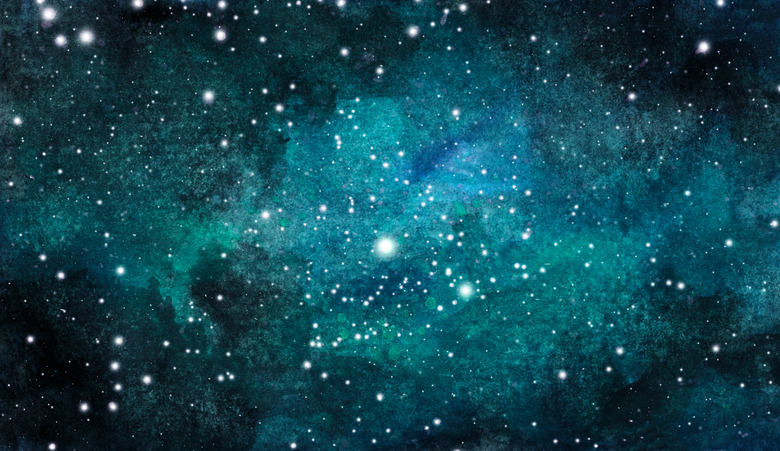How To Paint Your Room Like The Night Sky
A clear view of a night sky is like gazing at a work of art, even though the stars are light-years away. Instead of waiting for a perfectly clear night to use a telescope or simply look up at a stunning view, paint your bedroom walls or ceiling for an amazing starscape visible from your own bed.
Options abound when it comes to painting night sky views, as you're free to re-create actual constellations or make up your own. You can even paint distant galaxies and nebulae as if you're flying millions of miles from Earth. As an added bonus, fluorescent paint lets you view awesome space scenes under a black light's glow any time of day, while glow paints allow you to have plain walls during the day and space scenes at night with no dark background color necessary.
Preparing the Room
Preparing the Room
Whether you plan to repaint the room in a dark sky color or simply add a few stars or galaxies in glow paint atop the current paint color, getting the room ready makes the project easier and helps ensure success.
If you're painting the night sky on one or more walls, move all furniture at least several feet out of the way. For a ceiling version of a night sky, either move all the furniture out of the room or cover all of the furnishings and the floor with drop cloths or large tarps, as paint splats happen when working up above. Dust off the project surfaces and wipe them down with a barely damp cloth, rinsing and wringing the cloth as needed. Allow the paintable surfaces to dry completely.
Choosing the Right Paint
Choosing the Right Paint
The right paint for your night sky project depends on the desired end result. If you just want a scene with a dark blue or black background and various lighter colors of stars requiring no special lighting or dark conditions to view the faux sky, normal latex and acrylic interior paints are perfect for the job. A clear glaze also comes in handy for making wispy nebulae or galaxies or even comet trails.
If you want the luminous night sky objects to glow once you turn off the lights, use artist-grade glow paints, as many of the usual craft-store varieties don't give off much of a glow. These paints come in all sorts of glowing colors, and some are virtually invisible during daylight hours, which means even white walls or ceilings will work for this with no need to paint a dark sky background unless you want to.
Other glow paints are somewhat visible during the day, so they'll be obvious on the walls. Some of these also glow under a black light, so even in a partially darkened room, they'll glow. Another option is to simply use fluorescent paints that stand out on the wall during the day and really pack a visual punch under the ultraviolet black light glow.
Painting the Night Sky
Painting the Night Sky
If you wish, paint a few actual constellations on the project surface for a somewhat realistic sky chart. Mix some of the chosen white paint with a hint of a blue or yellow from time to time to vary the glow of the stars. Look at an actual star chart, such as one from an astronomy website or magazine, and paint the few larger stars by using the back end of an artist's paintbrush for dots or a pointy paintbrush for less circular stars.
Feel free to make some small starbursts by mixing glaze with a hint of the desired paint, as this creates somewhat of a glowing effect. If you'd rather make the night sky with the constellations to scale in relation to one another, rent an overhead projector and focus a constellation chart onto the project surface. Then trace the stars with your star-colored paint, almost like using a stencil.
For random stars in and around the constellations, dip an old toothbrush into the paint and run your thumb across the bristles as you flick the brush toward the project surface; this may take a little practice on scrap paper to get a good look. Vary the color from time to time, ranging from slightly yellow to slightly red or slightly blue but mostly white.
For nebulae, galaxies, and more ethereal gaseous elements of the night sky, mix a little translucent glaze into the desired colors, such as red, blue, green, and yellow. Paint blobs of color thinly onto the project surface using an actual nebula or galaxy image as a guideline for the shape, which is often cloudlike. Mix in some of the other colors and blend them slightly into and around the first color. Once that dries, flick on some light-colored stars.
